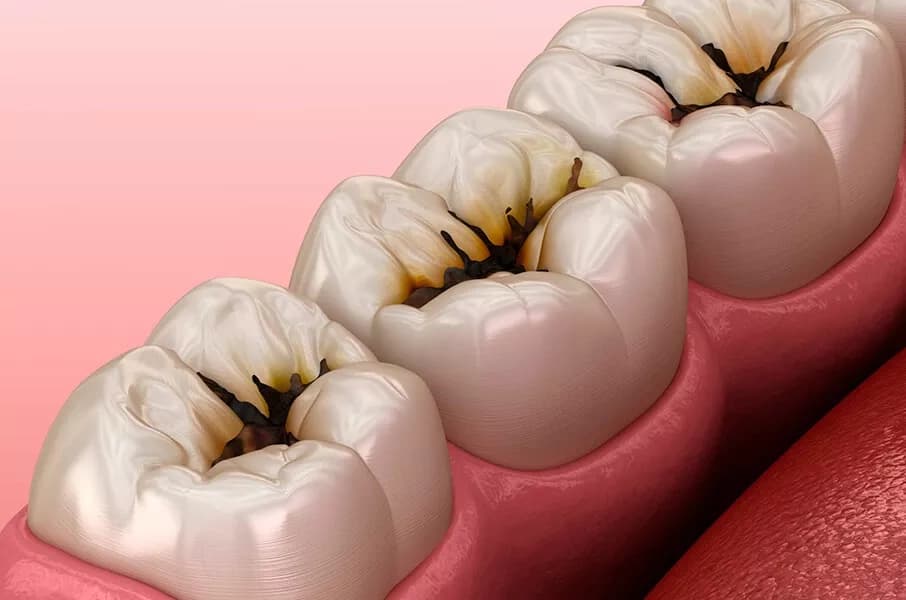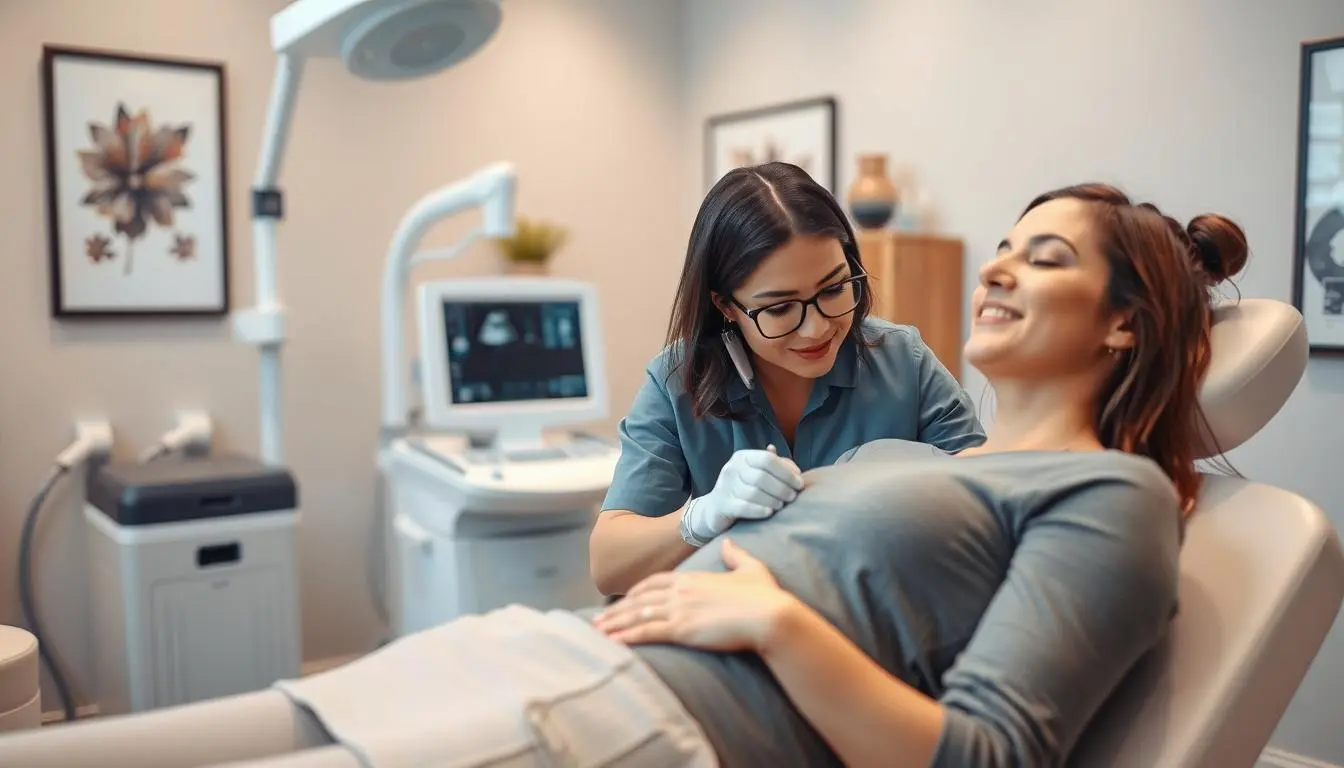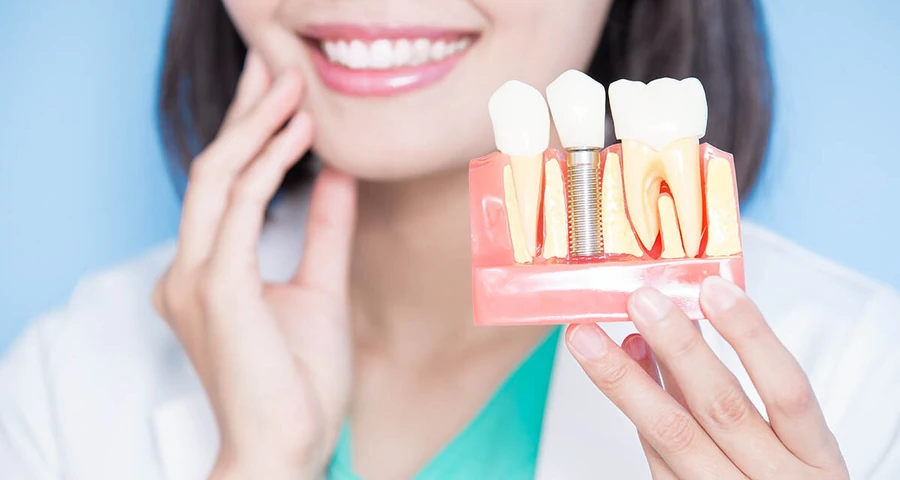If you’ve ever wondered how to tell if you have a cavity, you’re not alone. Cavities—also called dental caries—are one of the most common health conditions worldwide. According to the CDC, over 90% of adults experience at least stage 1 early cavity in their lifetime, and the WHO ranks cavities as the most widespread chronic disease globally. Despite this, many people ignore early cavity symptoms until they require costly or painful treatments.
Cavities don’t just threaten your teeth—they can affect your overall health too. Left untreated, dental decay may lead to gum disease, systemic inflammation, or even heart complications. The good news? Cavities are both preventable and treatable when detected early.
👉 In this guide, you’ll learn 5 clear symptoms that how to tell if you have a cavity, plus smart prevention tips and even eco-friendly dental care habits that support both your oral health and the planet.
What Exactly Is a Cavity? (And Why It Happens)
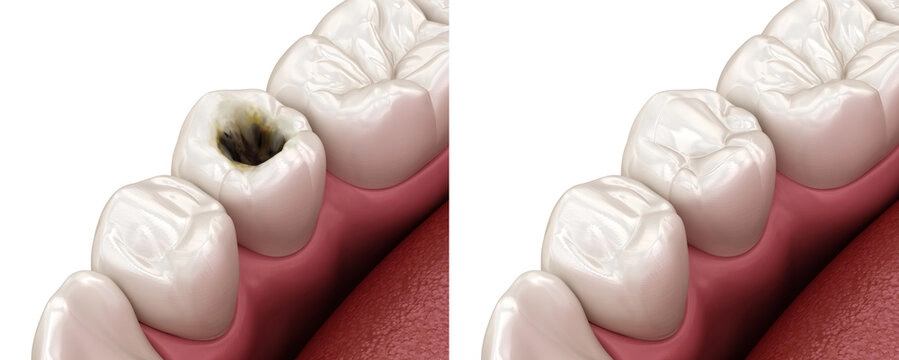
To truly understand how to know if you have a cavity, it helps to learn what a cavity is and how it forms. A cavity is essentially a hole in your tooth caused by bacterial activity. The process happens in stages:
- Bacteria feed on sugars and starches from food and drinks.
- These bacteria release acids that attack tooth enamel.
- Over time, the enamel weakens and erodes, forming soft spots or small holes.
- If untreated, decay spreads deeper into dentin and pulp, causing pain and infections.
Lifestyle Contributors to Cavities
Several everyday habits can accelerate this process:
- High sugar intake (sodas, candy, processed snacks).
- Poor oral hygiene, such as skipping brushing or flossing.
- Dehydration, which reduces saliva (your natural cavity defense).
- Frequent snacking, giving bacteria more fuel to produce acids.
For readers interested in holistic wellness, it’s worth noting that diet and hydration play a huge role in cavity prevention. Even small shifts—like drinking more water, limiting sugary drinks, and trying natural toothpaste options—can reduce cavity risk without harsh chemicals.
The Role of Oral Microbiome
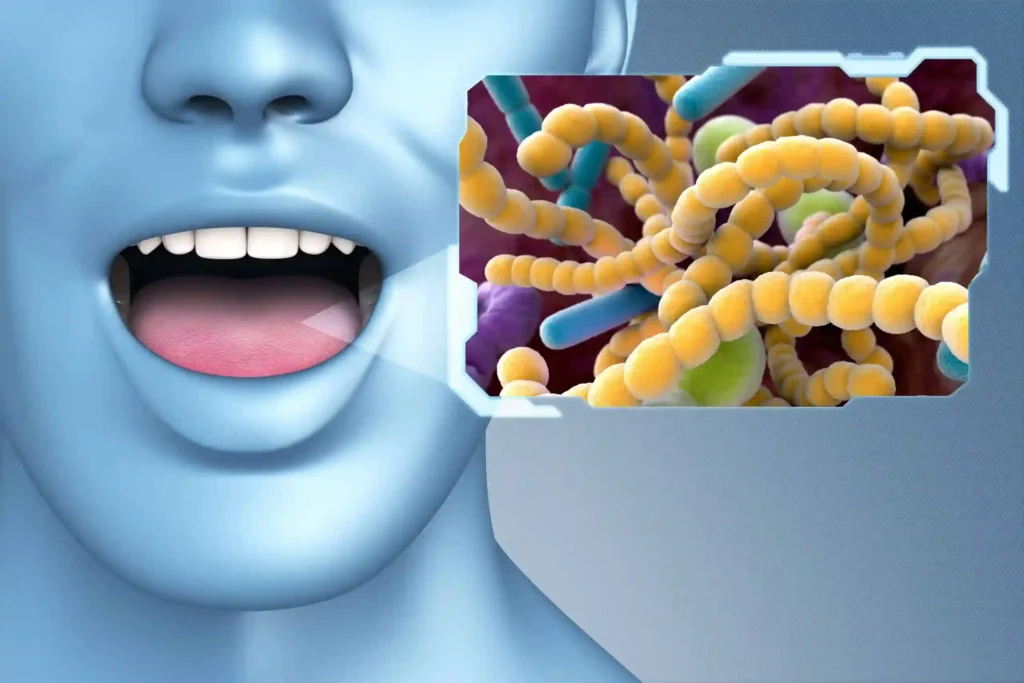
When learning how to tell if you have a cavity, it’s important to look beyond just brushing and flossing. Your mouth is home to an oral microbiome—a delicate ecosystem of good and bad bacteria. When balanced, this microbiome helps protect enamel, supports digestion, and strengthens immunity. But when harmful bacteria dominate, the risk of cavities skyrockets.
How the Oral Microbiome Affects Cavities:
- ✅ Healthy balance: Good bacteria produce protective compounds that help remineralize enamel.
- ❌ Imbalance (dysbiosis): Acid-producing bacteria take over, eroding enamel and creating ideal conditions for cavities.
Lifestyle Habits That Disrupt the Oral Microbiome
- Overuse of sugary foods and drinks.
- Excessive mouthwash use (kills good bacteria too).
- Low water intake leading to dry mouth.
- Highly processed diets with few minerals.
Pro Tip: Instead of harsh antibacterial rinses, try alcohol-free, natural mouthwashes with xylitol or herbal extracts. They reduce cavity-causing bacteria while protecting the good ones.
5. Clear Symptoms of a Cavity You Shouldn’t Ignore
Many people search “how do I know if I have a cavity” only after they’re in pain. The truth? Cavities often start silently. Catching them early saves both your teeth and your wallet. Below are five cavity symptoms you should watch out for.
| Symptom | What It Means | Self-Check Tip | When to See a Dentist |
| 1. Sensitivity to hot, cold, or sweet foods | Enamel erosion exposes nerve endings | Keep a log of foods/drinks that trigger discomfort | If pain lingers more than a few seconds |
| 2. Visible holes, spots, or discoloration | White spots = early decay; brown/black = advanced | Use a mirror in natural light | If holes or dark spots get larger |
| 3. Persistent toothache or throbbing pain | Decay may have reached dentin or pulp | Note if pain worsens at night or while chewing | Immediate visit if pain is constant |
| 4. Bad breath that doesn’t go away | Bacteria in cavities produce sulfur compounds | Compare morning breath vs. all-day odor | If odor persists after brushing |
| 5. Food getting stuck or rough feeling on teeth | Cavities trap particles, increasing plaque | Try a “floss test”: if floss snags, decay may be present | If stuck food leads to swelling or irritation |
Pro Tip: A cavity may start as a faint white chalky spot on enamel—something most people overlook. Check your teeth in good lighting once a week; early detection makes a huge difference.
1. Tooth Sensitivity to Hot, Cold, or Sweet Foods
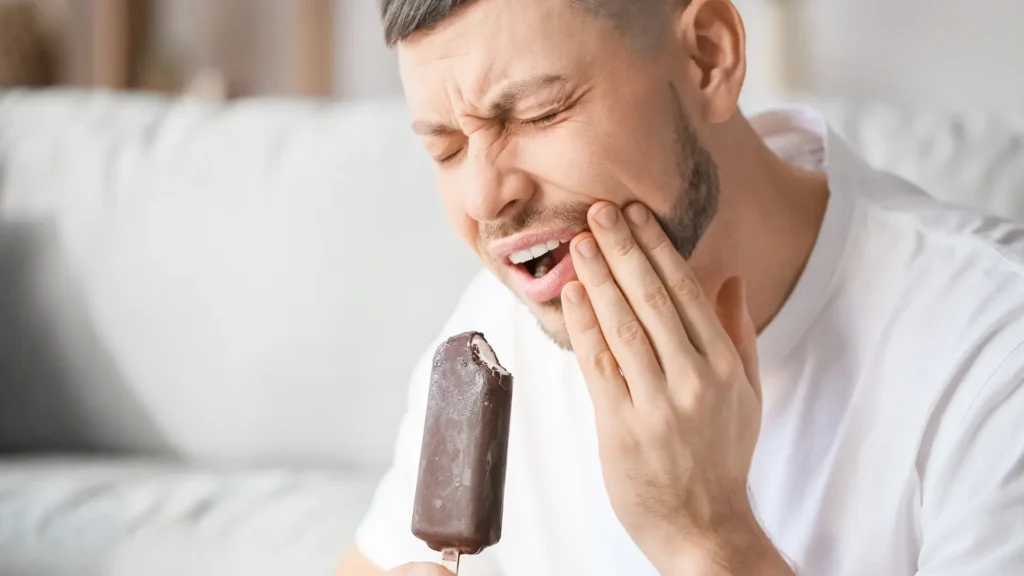
One of the first signs of a cavity forming is sensitivity. When enamel wears down, the dentin layer (which contains tiny nerve pathways) becomes exposed. This makes your teeth react sharply to hot coffee, ice water, or even sweet treats.
Why This Happens:
- Enamel erosion leaves nerves unprotected.
- Acidic or sugary foods intensify the sensation.
- Sensitivity often starts mild and worsens as the cavity deepens.
Self-Check Tips:
- Keep a food diary—note which drinks or snacks trigger discomfort.
- See if sensitivity is temporary or constant.
- Compare with sensitivity toothpaste use; if relief doesn’t last, a cavity may be present.
Pro Tip: If you’re fitness-minded, avoid sipping on sports drinks throughout the day. Their high sugar and acid content are common causes of tooth sensitivity and cavities.
2. Visible Holes, Spots, or Discoloration
When people search “how to know if you have a cavity at home”, this is often the easiest clue: visible changes on your teeth. Early cavities may look like chalky white spots (loss of minerals), while advanced ones appear as brown or black pits.
Stages of Visual Cavity Symptoms:
- Early stage: White spots on enamel.
- Progression: Yellow, brown, or gray discoloration.
- Advanced: Noticeable holes or pits in the tooth surface.
How to Check at Home:
- Stand near a window with natural light—artificial light can miss subtle spots.
- Use a dental mirror (eco-friendly versions are available) to check back teeth.
- Run your tongue over your teeth; a rough or uneven surface could mean enamel damage.
| Stage | Appearance | Action Step |
| Early | White chalky spots | Add fluoride or remineralizing toothpaste |
| Moderate | Brown or dark spots | Book a dental exam soon |
| Advanced | Visible holes | May need filling or root canal |
Pro Tip: Not all dark marks are cavities—stains from coffee, tea, or smoking can look similar. If unsure, let a dentist confirm before assuming it’s decay.
3. Persistent Toothache or Throbbing Pain
A toothache that lingers is one of the clearest signs you may have a cavity bewteen teeth. Unlike short-term sensitivity, cavity-related tooth pain often feels sharp, throbbing, or constant, especially when decay has reached the tooth’s inner layers (dentin and pulp).
Why Cavity Pain Happens:
- Enamel erosion allows bacteria to reach dentin.
- Nerve irritation inside the pulp leads to throbbing pain.
- Infection or abscess can cause swelling and severe discomfort.
Toothache Patterns That Suggest a Cavity:
- Pain that worsens at night or while lying down.
- Discomfort triggered when chewing or biting.
- Random waves of pain even without eating.
| Normal Sensitivity | Cavity-Related Pain |
| Brief twinge after hot/cold food | Lingering ache that lasts minutes or hours |
| Relief after using sensitivity toothpaste | No relief even with special toothpaste |
| Doesn’t worsen when chewing | Pain intensifies when chewing or biting |
Pro Tip: If you’re unsure whether pain is from a cavity or gum irritation, do a “tap test”—gently tap your tooth with the handle of a toothbrush. If it triggers sharp pain, you likely have a cavity or infection that needs dental attention.
4. Bad Breath That Doesn’t Go Away
Another overlooked sign when learning how to tell if you have a cavity is chronic bad breath (also called halitosis). Unlike morning breath, which disappears after brushing, cavity-related odor lingers because bacteria thrive inside the decayed area.
Why Cavities Cause Bad Breath:
- Bacteria in cavities release sulfur compounds (rotten egg smell).
- Trapped food particles decompose inside holes.
- Reduced saliva flow worsens odor by allowing bacteria to multiply.
How to Tell If Bad Breath Is From a Cavity vs. Other Causes:
- Morning Breath → Temporary, goes away with brushing and hydration.
- Cavity-Related Breath → Persists even after brushing, flossing, or rinsing.
- Digestive/Other Causes → Accompanied by burping, acid reflux, or sinus issues.
| Type of Bad Breath | Cause | Fix |
| Morning breath | Dry mouth overnight | Brush + hydrate |
| Cavity-related odor | Bacteria in tooth decay | Dental filling/cleaning |
| Diet-related odor | Garlic, onions, coffee | Temporary, food-dependent |
Eco-Conscious Pro Tip: Instead of using alcohol-based mouthwash (which dries your mouth), try a homemade rinse with baking soda, xylitol, or green tea extract. These natural options fight odor-causing bacteria without disrupting your oral microbiome.
5. Food Getting Stuck or Rough Feeling on Teeth
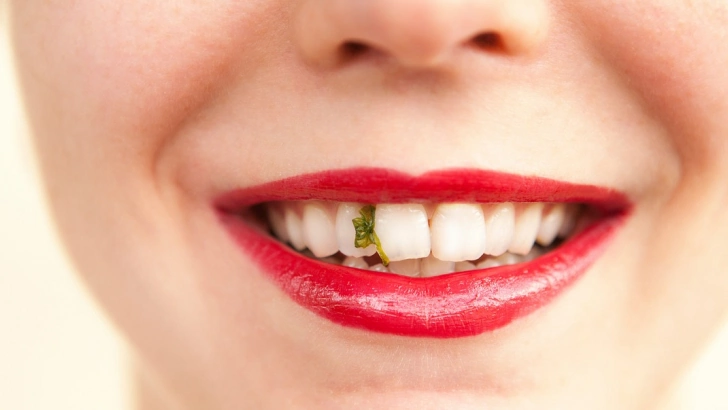
Another clear warning sign when asking how to know if you have a cavity is when food constantly gets stuck between your teeth or you notice a rough, uneven surface while running your tongue across it. Cavities create tiny holes and crevices where particles collect, leading to more plaque and irritation.
Why This Happens:
- Cavities carve out pockets in enamel.
- These spaces trap food debris and bacteria.
- Over time, this increases the risk of gum inflammation and tooth decay progression.
At-Home Self-Check:
- Try the “floss test”—if floss repeatedly snags or shreds in the same spot, you may have a cavity.
- Notice if certain foods (like meat or bread) always stick in the same tooth gap.
- Run your tongue over teeth; a rough patch can mean enamel erosion.
Pro Tip: If you rely on floss picks, switch to biodegradable floss or water flossers—both are eco-friendly and highly effective at dislodging food from cavity-prone spots.
Early vs. Advanced Cavity Symptoms
Not all cavity symptoms are the same. Knowing the difference between early cavity signs and advanced tooth decay symptoms can help you take action before treatment becomes painful—or expensive.
Early Cavity Symptoms (Stage 1–2):
- White spots or light discoloration on enamel.
- Occasional sensitivity to cold/sweet foods.
- Mild roughness when touching teeth with tongue.
Advanced Cavity Symptoms (Stage 3–4):
- Visible holes or pits in teeth.
- Persistent, throbbing toothache.
- Food trapping and foul odor.
- Swelling or pus near gums (abscess).
| Stage of Cavity | Symptoms | Action Needed |
| Early (Stage 1) | White spots, mild sensitivity | Remineralizing toothpaste, dietary changes |
| Moderate (Stage 2) | Brown spots, occasional pain | Dental checkup, possible small filling |
| Advanced (Stage 3) | Holes, sharp pain, bad breath | Larger filling, crown, or root canal |
| Severe (Stage 4) | Abscess, swelling, severe pain | Emergency care, root canal or extraction |
The Danger of Ignoring Symptoms
Ignoring cavity symptoms can lead to serious complications beyond tooth decay. Advanced untreated cavities can cause:
- Root canal infections → requiring extensive dental work.
- Tooth loss → which may lead to shifting teeth and bite problems.
- Gum disease (periodontitis) → linked to heart and metabolic conditions.
- Systemic inflammation → cavity bacteria can spread, impacting overall health.
Pro Tip: Think of cavities like cracks in a wall—fixing them early is quick and inexpensive, but waiting too long allows deeper damage that requires major repairs.
Self-Check: Can You Detect a Cavity at Home?
Many people wonder how to tell if you have a cavity without going to the dentist. While only a dentist can confirm with X-rays and professional tools, there are some cavity symptoms you can detect at home if you know what to look for.
What You Can Notice at Home:
- White or brown spots on enamel.
- Sensitivity to hot, cold, or sweet foods.
- Food getting stuck in the same spot repeatedly.
- Rough patches when running your tongue over teeth.
- Bad breath that doesn’t improve with brushing.
What Requires a Dentist’s Exam:
- Tiny cavities between teeth (not always visible).
- Early enamel demineralization before spots appear.
- Internal infections or abscesses (only visible on X-ray).
- Exact cavity depth and severity.
✅ At-Home Cavity Detection Checklist:
- Do you feel sharp or lingering sensitivity when eating/drinking?
- Can you see white, brown, or black spots in natural light?
- Does floss snag or shred in one area?
- Do you experience toothaches, especially at night?
- Does bad breath linger after brushing and rinsing?
If you answered yes to two or more, it’s a strong sign you should book a dental checkup.
Pro Tip: Use a dental mirror under bright, natural light once a week. Small chalky white spots may be the first stage of a cavity that can still be reversed with remineralization.
Safe At-Home Practices
When exploring how to check for cavities at home naturally, it’s crucial to avoid harmful DIY methods. Poking at your teeth with sharp objects or trying internet “hacks” can damage enamel and worsen the problem.
What Not to Do
- ❌ Don’t scrape or poke holes with metal tools.
- ❌ Don’t apply acidic home remedies (like lemon juice)—they erode enamel.
- ❌ Don’t overuse whitening strips, which can mask or irritate cavities.
What You Can Safely Try at Home
- ✅ Use a soft-bristled bamboo toothbrush to gently check for rough surfaces.
- ✅ Shine a flashlight + mirror to inspect hard-to-see molars.
- ✅ Perform a floss test—note if floss catches or frays.
- ✅ Track pain/sensitivity in a simple cavity diary.
| Unsafe Practices | Safe Alternatives |
| Poking with pins or toothpicks | Dental mirror with good lighting |
| DIY acid “cleaning” (vinegar/lemon) | Fluoride or remineralizing toothpaste |
| Ignoring mild symptoms | Keeping a cavity diary + dental check |
Eco-Friendly Pro Tip: Consider refillable toothpaste tablets and compostable floss. They’re not only sustainable but also gentle, making cavity detection routines safer for both you and the planet.
When to See a Dentist (Don’t Wait Too Long!)
Even if you’re tracking how to tell if you have a cavity at home, there comes a point when professional dental care is non-negotiable. Cavities progress in stages, and waiting too long can mean more pain, higher costs, and even losing a tooth.
Red Flags That Mean You Need a Dentist Now:
- Constant toothache that interferes with daily life.
- Swelling in gums or jaw near a painful tooth.
- Tooth sensitivity that lingers after eating/drinking.
- Visible holes, pits, or black spots on enamel.
- Persistent bad breath or foul taste in the mouth.
Why Early Visits Save Money:
| Stage of Cavity | Typical Treatment | Average Cost (USD) |
| Early (small surface cavity) | Filling | $100–$250 |
| Moderate decay | Larger filling or crown | $250–$1,200 |
| Advanced decay | Root canal + crown | $800–$2,500 |
| Severe/ignored | Extraction + implant/bridge | $3,000–$6,000 |
👉 As the table shows, the earlier you see a dentist, the easier—and cheaper—the fix will be.
Pro Tip: If cost is a concern, ask about community dental programs, dental schools, or insurance-based cleanings. Preventive care is almost always covered and can stop small issues before they turn expensive.
Prevention Tips Backed by Science
The best way to avoid worrying about how to know if you have a cavity is to prevent cavities in the first place. Decades of research show that small lifestyle changes and daily oral hygiene habits can dramatically lower your risk of tooth decay.
Daily Oral Care Habits
- Brush twice daily with fluoride or remineralizing toothpaste.
- Floss once a day—especially before bedtime.
- Rinse with water after meals to wash away food particles.
- Stay hydrated to maintain saliva flow, your natural cavity defense.
Smart Dietary Choices for Cavity Prevention
- Limit sugary drinks (soda, juice, energy drinks).
- Choose whole foods rich in calcium, phosphorus, and vitamin D.
- Snack on crunchy vegetables and fruits that help clean teeth naturally.
- Reduce sticky, processed snacks that cling to enamel.
| High-Risk Foods | Better Alternatives |
| Soda, energy drinks | Sparkling water, herbal teas |
| Candy, caramel, gummies | Nuts, cheese, apple slices |
| Processed protein bars | Whole fruit, yogurt |
Eco-Conscious Pro Tip: Switch to a bamboo toothbrush, compostable floss, and refillable toothpaste tablets. Not only do these reduce waste, but they also keep you consistent with your cavity prevention routine—turning oral care into a sustainable daily ritual.
Nutrition for Strong Teeth
One of the most powerful ways to lower your risk of cavities is through diet and nutrition. If you’re asking how to prevent cavities naturally, the answer often starts in your kitchen. Teeth, like bones, need the right minerals and vitamins to stay strong and resilient against bacteria and acid.
Key Nutrients That Protect Against Cavities:
- Calcium – strengthens enamel and dentin (found in dairy, leafy greens, almonds).
- Vitamin D – helps your body absorb calcium effectively (found in salmon, egg yolks, fortified foods).
- Phosphorus – works with calcium to rebuild enamel (found in nuts, seeds, lean meats).
- Magnesium – supports remineralization (found in whole grains, bananas, dark chocolate).
- Vitamin K2 – directs calcium to teeth and bones (found in fermented foods, grass-fed butter).
| Nutrient | Best Sources | How It Helps Teeth |
| Calcium | Milk, yogurt, kale, almonds | Strengthens enamel, prevents weak spots |
| Vitamin D | Sunlight, salmon, egg yolk | Boosts calcium absorption |
| Phosphorus | Fish, nuts, seeds, beans | Aids in enamel repair |
| Magnesium | Whole grains, spinach, avocado | Supports tooth mineralization |
| Vitamin K2 | Cheese, natto, butter | Guides minerals to teeth |
Pro Tip: If you follow a plant-based diet, consider fortified plant milks or supplements for calcium and vitamin D—two essentials for cavity prevention.
Fitness Buffs & Oral Health
Active people often ask: “Does my fitness routine affect cavity risk?” Surprisingly, the answer is yes. Athletes, gym-goers, and even casual fitness buffs may be at higher risk for cavities due to diet and hydration habits.
Why Fitness Routines May Increase Cavity Risk:
- Sports drinks → packed with sugar and acids that erode enamel.
- Protein bars/shakes → often sticky, clinging to teeth and feeding cavity-causing bacteria.
- Mouth breathing during workouts → dries out saliva, reducing natural cavity protection.
Cavity Prevention Tips for Fitness Enthusiasts
- Replace sports drinks with electrolyte water or coconut water.
- Rinse with plain water after protein shakes or bars.
- Chew sugar-free xylitol gum post-workout to boost saliva and neutralize acids.
- Keep a reusable water bottle handy to stay hydrated before, during, and after exercise.
| Fitness Habit | Cavity Risk | Better Alternative |
| Sipping sports drinks | High sugar + acid exposure | Water with electrolytes |
| Eating sticky protein bars | Residue feeds bacteria | Whole fruits + nuts |
| Heavy mouth breathing | Dry mouth, low saliva | Stay hydrated + chew xylitol gum |
Pro Tip: Build a post-workout oral care routine: rinse with water, chew xylitol gum, and brush within 30 minutes. It’s a small habit that protects your teeth while supporting your fitness goals.
Sustainable & Eco-Friendly Dental Care Options
If you’re wondering how to tell if you have a cavity and how to prevent future ones sustainably, you’ll be happy to know that dental care doesn’t have to harm the environment. Choosing eco-friendly options helps you reduce waste while protecting your teeth from decay.
Popular Eco-Friendly Dental Products
- Bamboo toothbrushes – biodegradable handles, less plastic waste.
- Natural toothpaste tablets – travel-friendly, avoid plastic tubes.
- Compostable floss – made from silk or plant-based fibers instead of nylon.
- Mouthwashes in glass bottles – eco packaging and fewer harsh chemicals.
- Water flossers – reusable, reduce reliance on disposable products.
| Traditional Dental Product | Eco-Friendly Alternative | Benefit |
| Plastic toothbrush | Bamboo toothbrush | Reduces plastic waste |
| Nylon floss | Corn fiber or silk floss | Biodegradable, natural |
| Standard toothpaste | Toothpaste tablets | Plastic-free packaging |
| Alcohol-based mouthwash | Herbal rinse in glass | Gentle, eco-friendly |
Pro Tip: Look for fluoride-containing eco-friendly toothpaste tablets. Many people mistakenly skip fluoride when going natural, but it’s still essential for cavity prevention.
Conclusion
Now that you know how to tell if you have a cavity, it becomes easier to recognize the early warning signs like tooth sensitivity, visible spots, toothache, bad breath, or food getting stuck between your teeth. The good news is that cavities are preventable, and by learning how to tell if you have a cavity in its early stages, you can save yourself from costly treatments like root canals or tooth loss.
Simple habits such as checking your teeth in natural light, tracking sensitivity in a journal, switching to eco-friendly fluoride toothpaste, and scheduling regular dental checkups every six months can make a big difference. Think of cavity prevention as an investment in your long-term health—small steps today can protect both your smile and your overall wellness tomorrow.
Frequently Asked Questions
1. How do I check myself for cavities?
Look for white, brown, or black spots and test for sensitivity to hot, cold, or sweet foods. A mirror and good lighting can help you spot early signs. For certainty, a dental exam or X-ray is needed since some cavities hide between teeth.
2. Does a cavity go away on its own?
No, once tooth enamel is permanently damaged, the cavity cannot heal by itself. Only a dentist can repair it with a filling or treatment. At best, fluoride can slow early enamel erosion but won’t reverse a true cavity.
3. What are the warning signs of a cavity?
Common signs include tooth sensitivity, visible discoloration, persistent toothache, bad breath, and food getting stuck in teeth. Noticing these early can save you from root canals or tooth extractions later.
4. What does stage 1 of a cavity look like?
Stage 1 cavities often appear as small white chalky spots on enamel. This stage is reversible with fluoride and good oral hygiene. Catching decay here means no drilling or filling is usually needed.
5. What is the 2 2 2 rule for teeth?
Brush 2 times a day, for 2 minutes each, and visit your dentist 2 times a year. This simple rule helps prevent cavities. It’s one of the easiest habits to follow for lifelong oral health.
6. What can be mistaken for a cavity?
Tooth stains, enamel hypoplasia, and minor cracks can mimic cavities. Only a dentist can confirm with proper examination. That’s why professional checkups are important even if your teeth look fine.
7. What kills cavities in teeth?
Nothing can kill an existing cavity—it must be treated by a dentist. However, fluoride can stop early decay from progressing further. Good oral hygiene keeps new cavities from forming in the first place.
8. Is a black hole always a cavity?
Not always—black spots may be staining from coffee, tea, or smoking. A dentist can determine if it’s true decay. If in doubt, always get a professional opinion before assuming the worst.
9. What does a stage 2 cavity look like?
Stage 2 cavities show brown or black spots that extend beyond enamel. Teeth may become sensitive to sweets or temperature changes. Treatment usually requires a filling to stop deeper progression.
10. Can you see a cavity in the mirror?
Yes, larger cavities may look like visible holes, pits, or dark spots in natural light. Smaller cavities often need X-rays to detect. If you suspect one, don’t wait—early dental care prevents bigger problems.

